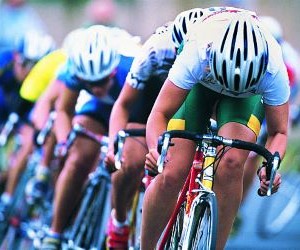Learn how to deal with punctures on long rides with prevention tips, repair techniques, and smart gear choices to keep rolling without stress.
HOW DO I RIDE SAFELY ON BUSY HIGHWAYS?
Highway cycling can feel daunting due to fast-moving traffic, limited space, and constant noise. Yet, many cyclists encounter highways on long-distance rides or touring routes. Riding safely in these environments requires preparation, the right gear, and strong situational awareness. This article explores strategies for visibility, positioning, and defensive riding to help cyclists handle busy highways with confidence.

Understanding highway cycling challenges
Highways are built for speed, not for bicycles. That alone makes them riskier than local streets or dedicated bike paths. Cyclists face challenges such as narrow shoulders, distracted drivers, high-speed vehicles, and unpredictable road conditions. To navigate safely, you must anticipate risks and plan accordingly.
Main risks of highway riding
The biggest dangers on highways come from speed and proximity. Vehicles move faster, giving drivers less reaction time. Cyclists are also more exposed to wind turbulence created by large trucks, and debris on shoulders increases puncture risks.
High vehicle speeds reduce reaction time.
Narrow or nonexistent shoulders limit maneuvering space.
Wind turbulence from trucks can destabilize bikes.
Road debris and rumble strips add extra hazards.
When highways are unavoidable
Many touring routes and intercity rides include sections of highway. While cyclists should always prioritize quieter roads, there are times when highways are the only option. In those cases, preparation and execution matter even more.
Maximizing visibility and positioning
Visibility is your best defense on highways. Drivers moving at 60 mph or more need extra time to register your presence. Positioning yourself correctly in the lane or shoulder helps ensure you are seen and reduces unsafe overtaking.
Essential visibility gear
Cyclists should always use high-visibility gear on highways. Bright clothing, reflective strips, and lights during both day and night make a huge difference in safety. Flashing rear lights, in particular, are highly effective at catching driver attention from afar.
Front white light and rear red light (flashing mode for maximum impact).
Reflective vests, bands, and pannier covers.
High-visibility helmet and gloves for added motion visibility.
Daytime running lights to improve recognition even in sunlight.
Best lane and shoulder practices
If the highway has a shoulder, ride predictably within it but stay clear of debris and rumble strips. On highways without shoulders, assert your position in the lane to discourage unsafe close passes. Consistent, predictable positioning communicates your intent to drivers and forces them to pass responsibly.
Avoid weaving in and out of the shoulder when it appears intermittently. Instead, hold a steady line so that drivers can anticipate your path.
Defensive cycling techniques
Highway riding demands a defensive mindset. Cyclists must anticipate risks before they happen, remain predictable, and leave themselves escape options in case of emergencies.
Anticipating traffic behavior
Always assume drivers may be distracted or fatigued, especially on long highway stretches. Use mirrors or frequent shoulder checks to monitor approaching vehicles. Anticipate lane changes near exits and entry ramps, where driver attention is split.
Slow down near on-ramps and intersections.
Watch vehicle patterns to predict sudden moves.
Maintain extra space when overtaking parked or slow vehicles.
Stay aware of escape routes in case of conflict.
Managing fatigue and focus
Highway noise, speed, and exposure create mental fatigue. Take regular breaks, stay hydrated, and avoid pushing beyond your focus capacity. A lapse in concentration on highways can have severe consequences.
Defensive riding also means knowing your limits. If conditions feel unsafe—whether due to heavy traffic, poor lighting, or weather—consider rerouting or waiting until conditions improve.
Balancing confidence and caution
Confidence is essential for riding highways, but it must be tempered with caution. Be assertive in your positioning and communication, but never take unnecessary risks. The safest highway riders are those who project confidence without forgetting their vulnerability.
Ultimately, riding on busy highways should be a last resort, but with proper preparation, visibility, and defensive strategies, cyclists can manage the risks and reach their destinations safely.
YOU MAY ALSO BE INTERESTED






